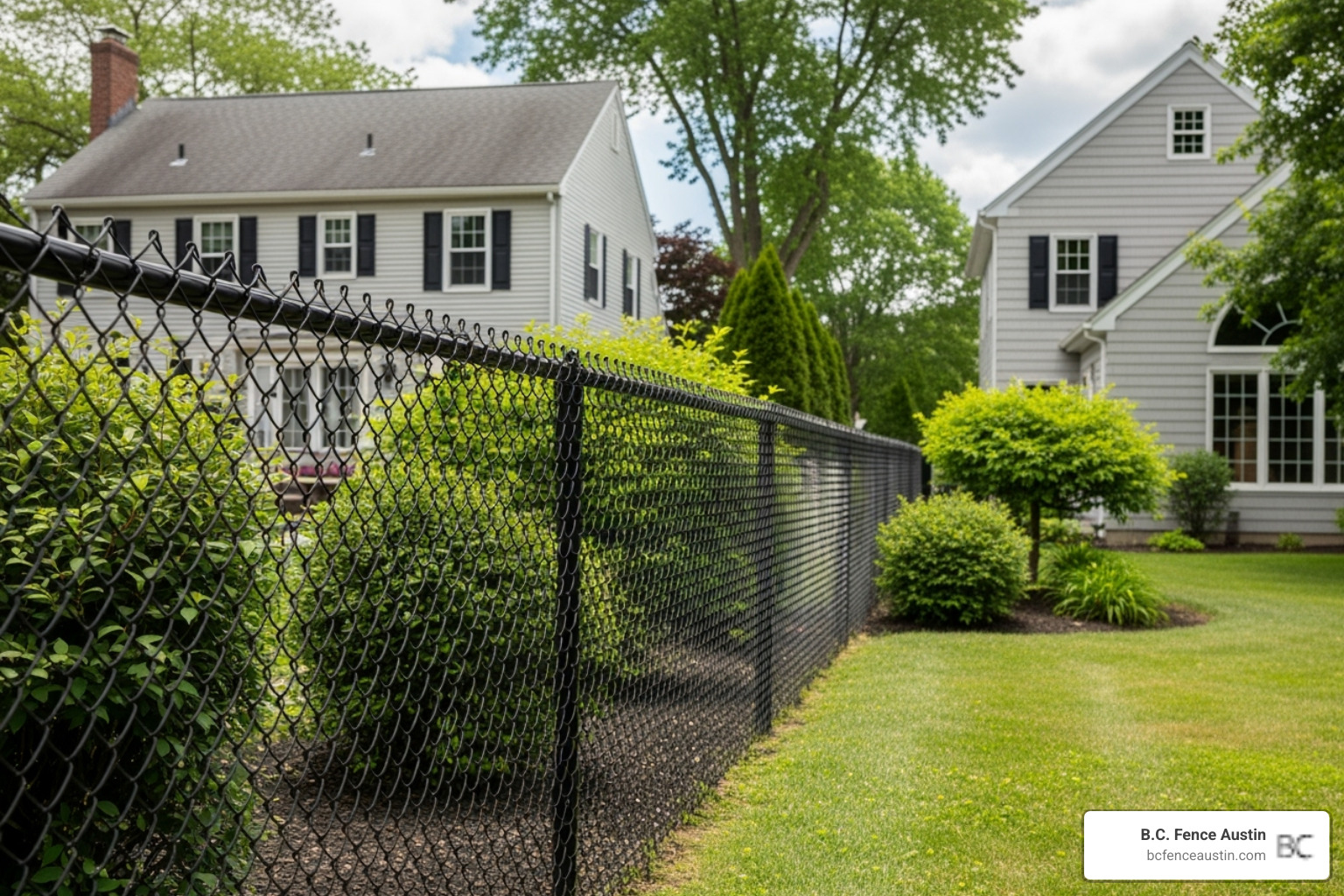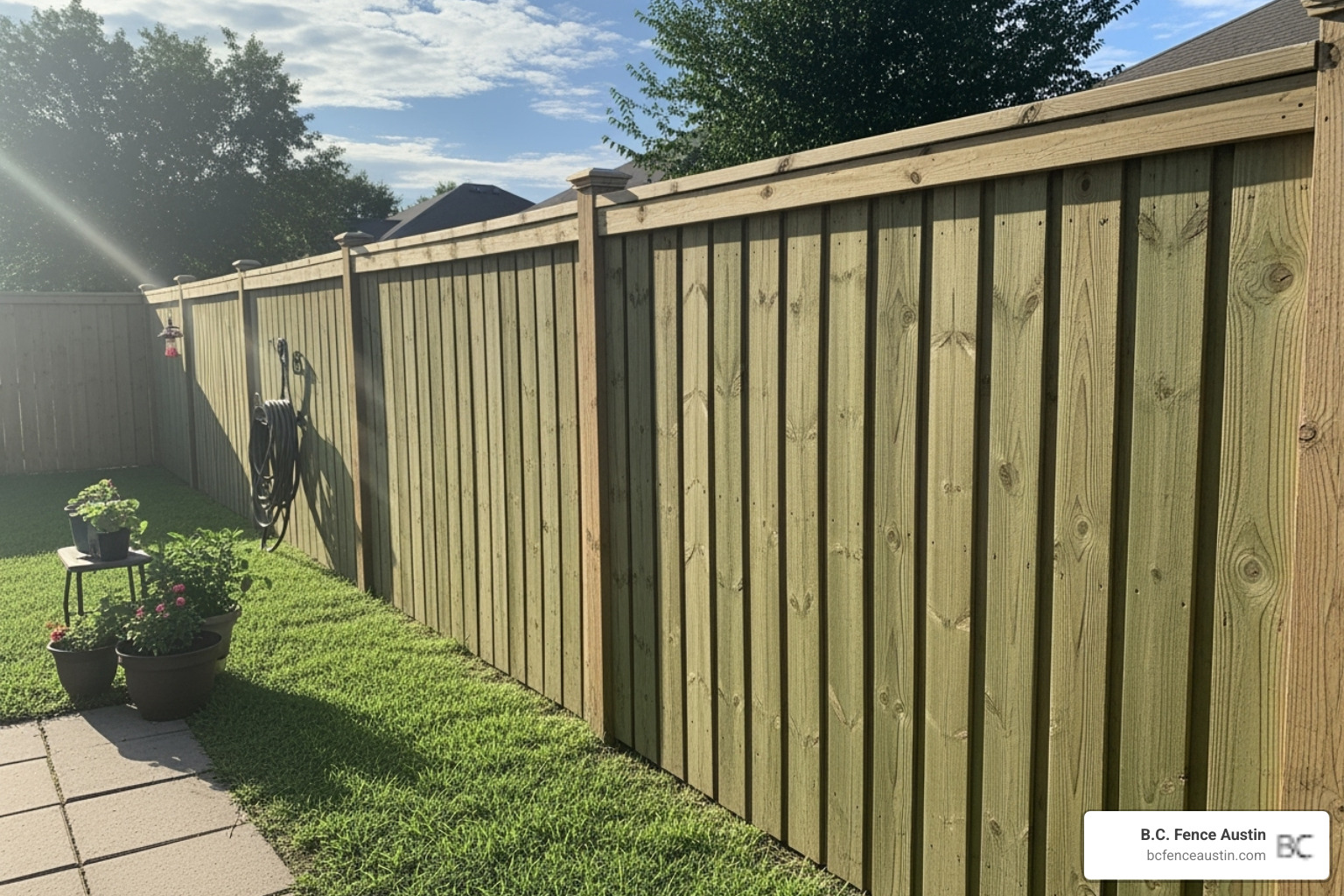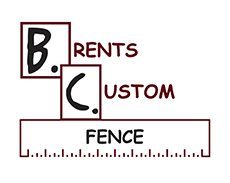Why Smart Homeowners Choose Budget-Friendly Fencing Solutions
Finding affordable fencing options that don’t sacrifice quality or style is a top priority for homeowners looking to improve their property’s privacy, security, and curb appeal.
Quick Answer: Most Affordable Fencing Options
- Chain-link fencing – Most economical for large areas and security
- Pressure-treated wood – Best balance of cost and privacy
- Wire fencing (hog wire/welded wire) – Lowest material cost for boundaries
- Pallet/reclaimed wood – Ultra-budget DIY option
Whether you’re creating a safe space for children and pets, defining property boundaries, or boosting your home’s aesthetic appeal, the right fence doesn’t have to break your budget.
The key is understanding which materials and installation methods deliver the best long-term value for your specific needs. Some options shine with ultra-low upfront costs, while others save money through minimal maintenance requirements over decades of use.
Your fencing goals, property terrain, and local regulations all play crucial roles in determining which budget-friendly option makes the most sense. Smart planning upfront can help you avoid costly mistakes and ensure your investment serves your family well for years to come.

Quick affordable fencing options definitions:
Understanding the Key Factors in Fencing Costs
Understanding what drives the total cost of your fence project is key to staying on budget. Overlooking these factors can lead to sticker shock.
Material choice is the biggest factor. Chain-link and wire fencing are typically the most economical upfront, while pressure-treated wood offers a balance between affordability and classic appeal.
Fence height and total length multiply your costs. A three-foot garden border is a much smaller investment than a six-foot privacy fence around your entire backyard. Taller fences require more materials and labor. Most suburban projects are between 150 to 200 linear feet, which can be a useful benchmark.
Your property terrain is a budget wildcard. A flat yard is straightforward, but slopes, rocks, or thick brush add complexity and cost. Uneven ground requires special techniques like stepping or racking fence panels.
Gates and hardware like hinges, latches, and locks add up. A simple walk-through gate costs less than a double-wide driveway gate. Quality hardware is a worthwhile investment for long-term function.
Labor complexity covers everything from digging post holes to removing an old fence. Challenging terrain or custom designs mean more hours on the job.
Understanding these factors helps you find truly affordable fencing options that work for your property and budget.
A Roundup of the Most Affordable Fencing Options
Let’s explore the most budget-friendly fencing materials that deliver real value. Each option has unique benefits, from low material costs to minimal upkeep.
Chain-Link Fencing: The Versatile & Economical Choice

For a durable and affordable fencing option, chain-link is a top choice. Made from galvanized steel, its durability is legendary, and it shrugs off harsh weather. Modern vinyl-coated versions in black or green offer a sharper look and extra rust protection.
Chain-link is also very low maintenance; a quick spray with a hose is usually all it needs. For security, it creates a solid physical barrier that deters unwanted visitors and is difficult to climb.
The main trade-offs are limited privacy and an industrial look, though privacy slats can be added. It’s ideal for defining property lines, containing pets, and securing pools or play areas. If you’re considering this reliable option, check out our chain link fencing supplies.
Wood Fencing: Classic Appeal on a Budget

Wood fencing offers timeless charm and can be an affordable choice. Its natural beauty brings warmth and character that can’t be replicated.
The customization possibilities are endless, from picket fences to solid privacy panels, with various stains and paints. For privacy, wood is a top affordable choice, creating a backyard sanctuary that blocks sightlines and reduces noise.
The main drawback is its maintenance requirements. Wood needs regular sealing or staining to prevent rot and insect damage. It’s perfect for homeowners who value curb appeal and don’t mind some upkeep. Pressure-treated pine is the best balance of affordability and durability. For a detailed comparison, see our guide on vinyl fences versus wood fences.
Wire Fencing: Practical and Highly Affordable Fencing Options
For covering large areas on a tight budget, wire fencing offers incredible value. It’s one of the most cost-effective options available.
Hog wire has openings that are larger at the top and smaller at the bottom, making it ideal for animal containment. Welded wire has a consistent mesh pattern, great for garden protection and general boundaries.
Material costs are extremely low, making large projects financially feasible. The rustic aesthetic suits country settings and natural landscapes. Its high visibility can be a benefit, allowing for unobstructed views. The limitations are a lack of privacy and minimal security against intruders. Wire fencing is excellent for garden protection, livestock containment, and defining large boundaries. Learn more about rural applications in our guide to the best options for farm fencing.
Creative & Upcycled Fencing Solutions
Upcycled fencing is the ultimate budget-friendly option for DIY enthusiasts. It allows you to express your personality by creating a unique fence with your own hands.
Pallet fences are popular for their rustic charm. With some work, discarded pallets can be transformed into character-filled fences. Repurposed wood panels from old structures also create fences with history and a weathered patina.
These projects offer a unique, eco-friendly look with material costs that can be nearly zero. Challenges include variable material quality and labor-intensive work. Durability depends on the condition of the materials. Upcycled fencing is great for garden enclosures and decorative accents. For inspiration, check out this discussion on affordable DIY fence options.
Function First: Choosing the Right Fence for Your Needs
When choosing an affordable fencing option, start with its primary function. The right fence for pet containment differs from one for privacy or security. Matching the fence to its purpose is key to getting the best value.
Best Affordable Fencing Options for Privacy
Creating a private outdoor sanctuary doesn’t have to be expensive.
Wood privacy fences are the top choice for affordable seclusion. Using pressure-treated pine with tightly installed boards at a 6-foot or 8-foot height creates a solid visual barrier. While wood requires maintenance, the initial investment is often lower than other solid privacy options.
Alternatively, chain-link fences with privacy slats are a great option. If you already have a chain-link fence or prefer its durability, adding vinyl slats is a straightforward way to gain significant privacy. These most affordable privacy fence options deliver seclusion without the high cost.
Best for Security
A good security fence deters uninvited guests. While no fence is foolproof, some affordable fencing options offer excellent protection.
Tall wood fences (6 or 8 feet) are a formidable deterrent. The solid wall is difficult to climb and sends a clear message of privacy.
Chain-link fences are also effective for security, offering strength and durability, especially for larger properties. Specifying a heavier gauge wire adds extra toughness.
Reinforced gates are crucial for security, as gates are often the weakest point. Investing in sturdy construction and quality locks is essential. These budget-friendly residential fencing options for homeowners provide real peace of mind.
Best for Aesthetics & Curb Appeal

Aesthetic fencing can add charm and character to your home without a luxury budget.
Picket fences offer classic American charm, perfect for framing front yards or gardens. Using pressure-treated pine keeps costs reasonable.
Split rail fences provide a rustic, countryside vibe. They define property lines without blocking views and are cost-effective for large areas due to minimal material use.
Simple improvements can improve any fence. Fresh paint or stain, climbing vines on chain-link or wood fences, and decorative post caps are inexpensive ways to lift a fence from functional to attractive. These cheap front yard fence ideas prove that great curb appeal is achievable on a budget.
DIY vs. Professional Installation: A Value Comparison
When considering affordable fencing options, you must decide between a DIY project and professional installation. While DIY seems cheaper, it’s a nuanced decision.
The DIY Route
Building your own fence can offer significant upfront savings by eliminating labor costs. There’s also a great sense of accomplishment in completing the project yourself.
However, DIY fence installation requires tools and time. You may need to rent or buy post-hole diggers, levels, and saws. It’s also a major time commitment that can stretch over several weekends.
The risk of costly mistakes is high without experience. Uneven posts, misaligned panels, or poorly functioning gates can lead to buying more materials or redoing work. Plus, there’s no labor warranty if something goes wrong later.
Hiring a Professional
While professional installation has a higher initial cost, it offers significant long-term value.
Professionals bring expertise and efficiency, completing the job in a few days instead of several weekends. They arrive with all the proper tools and know-how to handle any terrain or challenge.
Most importantly, reputable companies provide quality assurance and a labor warranty. This ensures your fence is built correctly to stand strong for years, and if any installation issues arise, they will be fixed. Professionals also handle local permits and HOA rules, saving you from potential headaches.
The decision depends on your comfort level, time, and goals. Professional installation often provides better long-term value through durability and peace of mind. For more tips, see our guide on how to install a fence on a tight budget.
Frequently Asked Questions about Affordable Fencing Options
Here are answers to common questions about choosing the best affordable fencing options.
Is a chain-link fence cheaper than a wood fence?
This is a common question, and the answer involves more than just upfront cost.
For upfront material costs, chain-link is almost always cheaper per linear foot than a wood privacy fence. Installation is also often simpler and faster for chain-link, which can lower labor costs.
However, consider long-term maintenance costs. Chain-link is a “set it and forget it” material requiring little more than occasional cleaning. Wood, on the other hand, needs regular sealing or staining to prevent rot and warping.
In summary, chain-link is typically cheaper upfront and requires less long-term maintenance. However, adding privacy slats to chain-link can narrow the cost gap with wood. Learn more in our guide on chain link fence know everything about it.
What is the longest-lasting cheap fence?
When seeking a fence that is both inexpensive and durable, a few options stand out.
Chain-link takes the crown. Galvanized steel resists rust and weather damage for decades. A vinyl coating adds even more protection against the elements.
Pressure-treated wood is another long-lasting budget option, as the treatment helps it resist rot and insects. However, its lifespan depends on consistent maintenance, such as regular sealing.
Proper maintenance is crucial for maximizing the life of any fence. For the least money and minimal fuss, chain-link is your best bet. If you prefer the look of wood and can commit to upkeep, pressure-treated lumber offers good value.
Do I need a permit to build a fence in Austin?
Understanding permit requirements is crucial before starting any fence project.
Yes, a permit is likely required for most fence installations in Austin. The city has specific rules about fence height, setbacks (distance from property lines), and materials. Residential areas typically have a height limit of around 6 feet for backyards.
Homeowners’ Associations (HOAs) add another layer of rules. If you live in an HOA community in Cedar Park, Leander, Liberty Hill, Round Rock, Georgetown, Pflugerville, Lago Vista, or Jonestown, you must follow their specific guidelines on materials, colors, and styles.
Our advice is to always check with the City of Austin and your HOA first. This can save you from costly mistakes or fines. The official Austin fence regulations page has the most current information. A properly permitted fence adds legitimate value to your property.
Conclusion
Finding the right affordable fencing option is about making a smart choice that serves your family for years. “Affordable” can mean the low upfront cost of wire fencing or the long-term value of a low-maintenance chain-link fence.
The key is balancing cost with long-term value while focusing on your specific needs. Matching your fence to its function—whether for privacy, security, or aesthetics—is the best way to ensure a sound investment. A fence that perfectly serves its purpose is always the most valuable.
While DIY can save money, professional installation often provides better long-term value through quality and durability, ensuring the job is done right the first time.
At B.C. Fence Austin, we help families in Austin, Cedar Park, Leander, Liberty Hill, Round Rock, Georgetown, Pflugerville, Lago Vista, and Jonestown find that sweet spot where affordability meets quality. We’re here to help you get a fence that fits your budget today and serves you well for decades.
Ready to turn your fencing dreams into reality? Explore our full range of fencing services and let’s start building something great together.

